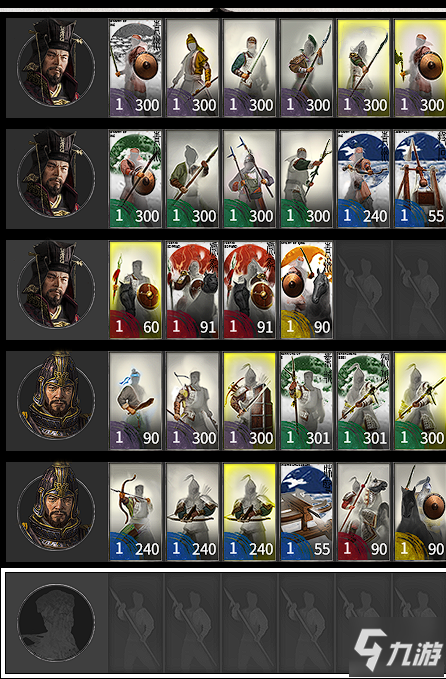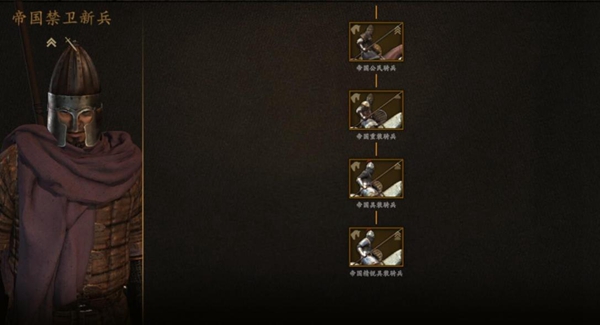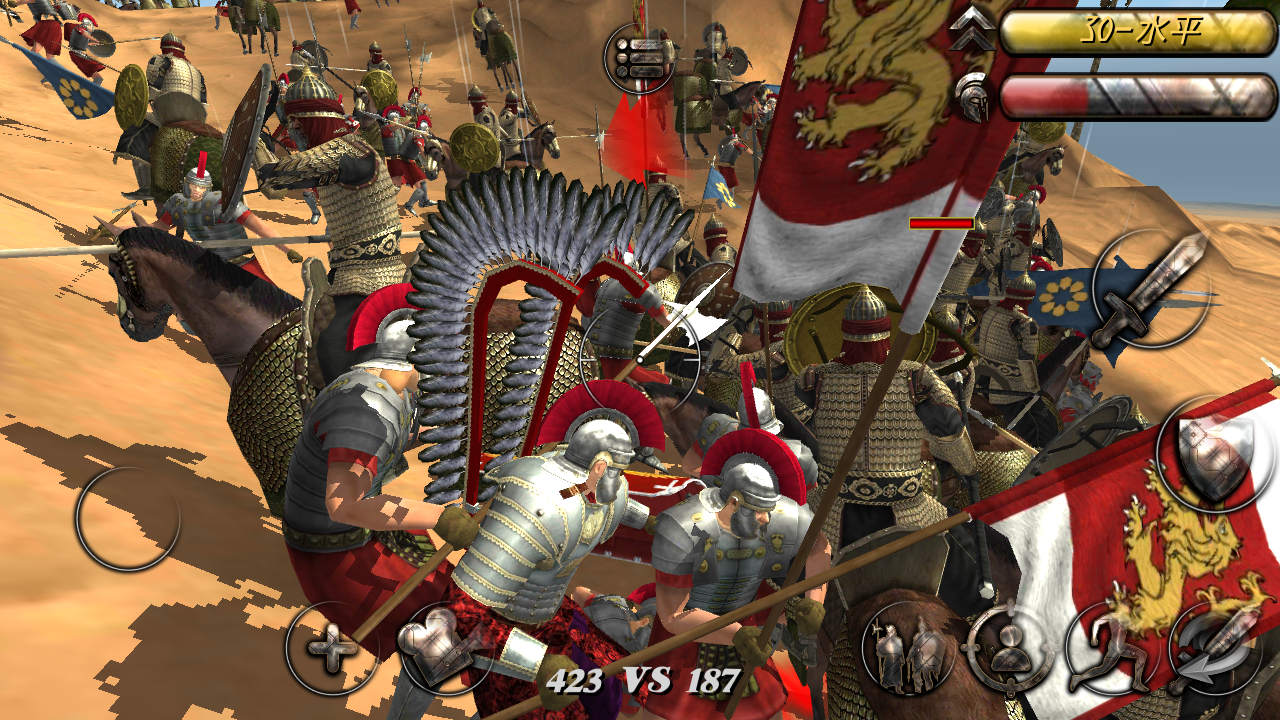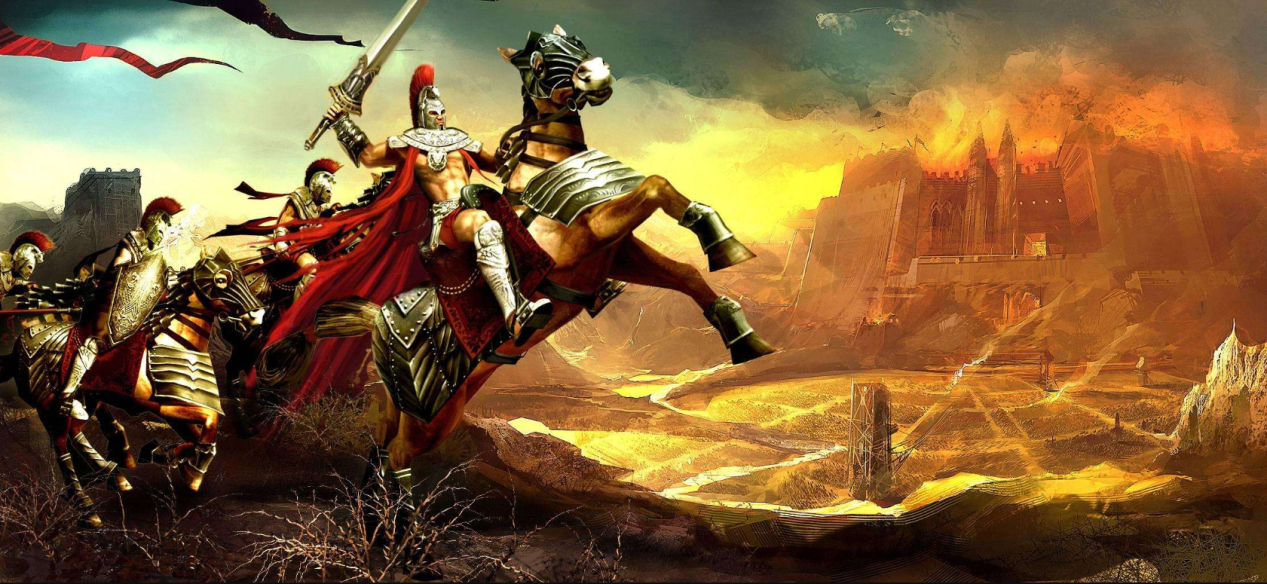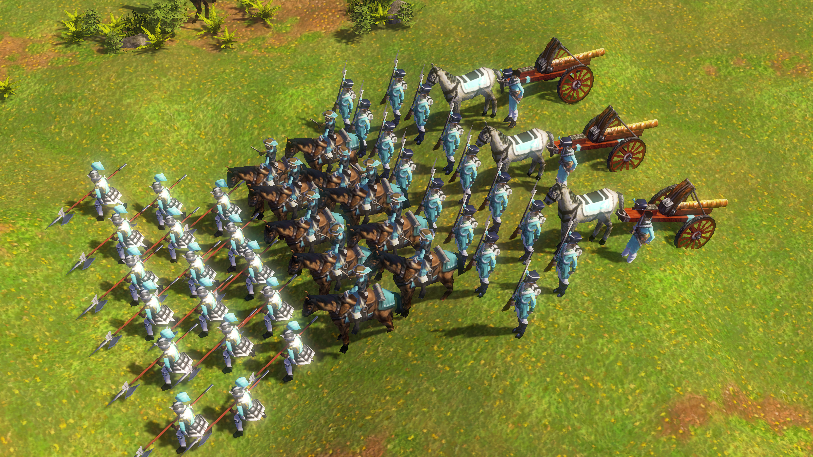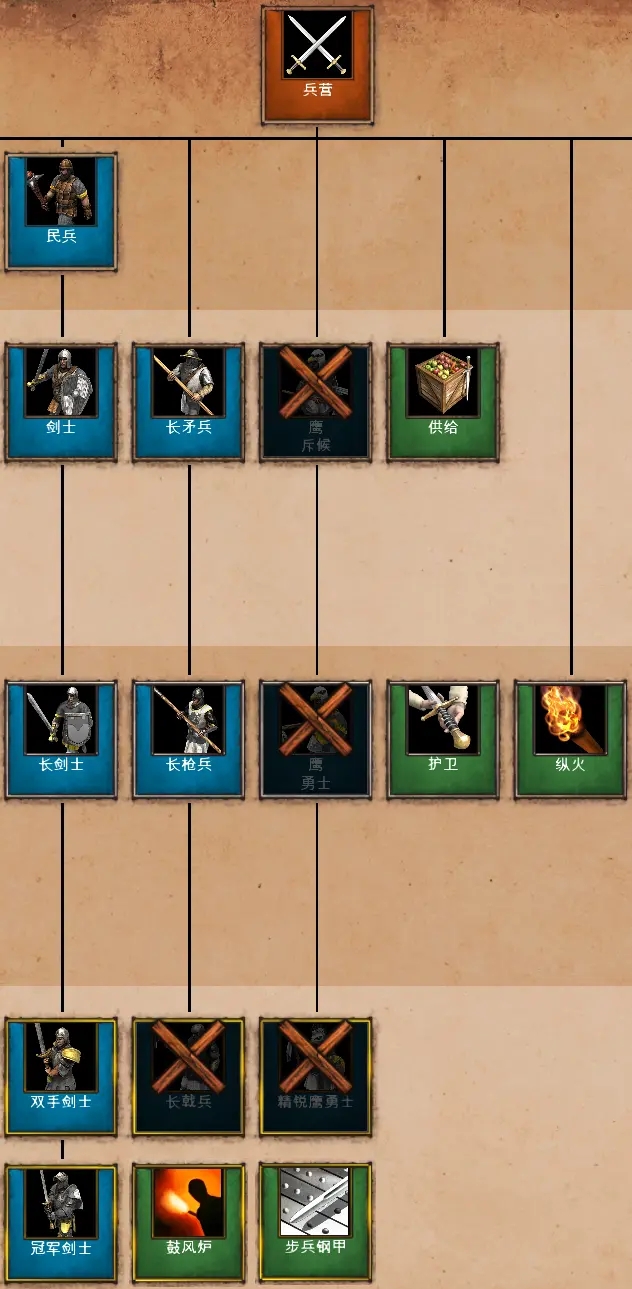The second day after reading "War and Peace", a bunch of questions came up:
For example, what is the relationship between hussars, Cossacks, cavalry, and infantry?
For example, "The horse he was riding was a Don horse bought from a Cossack during the march, and the crumpled hussar cap was tilted back aggressively." – Why did he have to buy the war horse himself?
For example, it is more intuitive to see in the movie that Russia and France all formed a phalanx, rushing forward blankly, firing a shot to replace a row of people. It seems that you are going to die directly to see who can avoid the shells. How is this different from directly fighting with bayonets in the cold weapon era?
I went to see my former colleague Zhu Buchong, who has a master's degree in history at Peking University and a senior military fan. He was called "a unique talent in history" by the harsh old editor.
As soon as Zhu Buchong entered the group, he said: "There are so many things, let's talk about each branch of the army", and then he talked for two hours.
This sharing was mainly based on questions from the group of friends, and she later compiled and supplemented a large amount of information.
War and Peace
Zhu Buchong explains as follows:
(Compiled, the gray part is her supplementary information)
Hussars
The origin is from the horseback riding people on the Hungarian steppes. Their logo is the cloak jacket worn on the left shoulder and the uniform full of gold threads.
This cloak jacket has a round shape of wolf skin and is wrapped around the left shoulder for protection during the day and worn at night to keep out the cold.
Hussars are a type of light cavalry whose main weapon is the curved saber from the steppes.
Since the hussars originated from the unruly Hungarian steppe horseback riding people, they have virtues of not being afraid of death, being bold and unrestrained. The famous French hussar general La Salle once said a famous saying, to the effect that: any hussar who is not dead by the age of thirty is a bastard!
a french hussar
French hussars uniform (photographed by Zhu Buchong at the Invalides in Paris, France)
2016 BBC short drama version of War and Peace (Nikolai Rostov)
Cossacks
The Cossacks, formerly known as Kassakhs, are nomadic people in the Don River Basin. With Zaporozha as their political center, they nomadically roam the steppes of Eastern Europe, from the Baltic Sea to the Black Sea.
In the process of Russia's eastward expansion, they were conquered and organized into Cossack cavalry, which was also a light cavalry. Therefore, unlike the hussars active in continental Europe at the same time, it is a unique Russian light cavalry unit. Perhaps due to the nature of their recruitment, Cossacks usually prepare their own war horses.
Cossacks appear in "War and Peace", mostly for adjutants, and hussar officers can directly assign tasks, including taking care of luggage carts and horses, directly using their horses, etc.
heavy cavalry
Note:
Heavy cavalry generally refers to a type of heavily armored horseback riding unit during the cold weapon war period.
The average men and horses of this unit are equipped with armor and shields with good protective properties, and are known for their powerful impact and excellent defense.
The riders and horses of heavy cavalry are taller and stronger than those of light cavalry. Heavy cavalry is an important assault force on the battlefield, used to break through the weaknesses of the enemy's line and deliver a devastating blow to the already shaken enemy. In view of this, armies of various countries in the 17th and 18th centuries rarely assigned heavy cavalry to perform tasks other than battlefield assault. In the era of cold weapons, a stable formation is the basis for ensuring victory, and high morale is the key to victory. Once the enemy's formation organization foundation and psychological balance are destroyed, it will be easier to seize the opportunity to win on the battlefield.
(Heavy cavalry, with cuirass / Hussars, without cuirass, with capes)
Heavy cavalry generally refers to a type of heavily armored horseback riding unit during the cold weapon war period. The average men and horses of this unit are equipped with armor and shields with good protective properties, and are known for their powerful impact and excellent defense. The riders and horses of heavy cavalry are taller and stronger than those of light cavalry. Heavy cavalry is an important assault force on the battlefield, used to break through the weaknesses of the enemy's line and deliver a devastating blow to the already shaken enemy. In view of this, armies of various countries in the 17th and 18th centuries rarely assigned heavy cavalry to perform tasks other than battlefield assault. In the era of cold weapons, a stable formation is the basis for ensuring victory, and high morale is the key to victory. Once the enemy's formation organization foundation and psychological balance are destroyed, it will be easier to seize the opportunity to win on the battlefield.

cuirassier
A type of heavy cavalry, they inherited the status of heavy cavalry on the battlefield in the Middle Ages and were mainly active on European battlefields from the mid-16th century to the early 20th century. It first appeared in 1802 to enhance the protection of heavy cavalry.
The cuirassiers wore defensive helmets and iron armor, and their weapons were sabers (a long-blade cold weapon weighing 2 kilograms that could cut the enemy in half) and a pair of spring revolvers.
Cuirassiers require super strength and endurance. French cuirassiers were very famous at the time. Napoleon called them "iron men". They could easily knock down light cavalry and attack tight infantry phalanxes.
The famous French cuirassier picture
The armor of French cuirassiers (photographed by Zhu Buchong at the Invalides, Paris, France)
French cuirassiers charge in the 1966 film
Lancer
Coming from Poland, due to the power of the Polish Lancers on the battlefield, many countries also followed Poland's example and established the Lancers. Prussia and Russia also had lancers throughout the Napoleonic era.
The weapon of the lancers was a spear, a French spear "nearly 3 meters long, weighing 3 kilograms, with a wooden staff with a steel tip" (by historian Alessandro Barbero). The lancer's helmet is similar to that of a cuirassier, a copper-plated steel helmet, but the feathers are of a different color. There is an emblem on the helmet that says "Medusa's head is impaled on a spear".
The biggest advantage of the Lancers is that they can fight against infantry phalanxes to a certain extent. The spears used by the French lancers are nearly 3 meters long, longer than any rifle with a bayonet. Therefore, if they are not hit by bullets, the lancers can attack the infantry in the square first. Although the spear had the greatest impact in a charge, the spear was vulnerable at close range against other cavalry, as the spear was a clumsy and ineffective weapon in side-to-side combat. By the end of the 19th century, many cavalry regiments in the British and other European armies were composed of cavalry with lances as well as cavalry with sabers. During the battle, the first assault formation used spears, and the second assault formation used sabers.
Lancer Figure
Dragoon
A type of dual-purpose cavalry that could dismount and fight with a rifle, as well as use a sword and shoot while on horseback.
Although dragoons are called cavalry, their equipment and training have been based on infantry standards for a long time. The dragoons of a few countries also include cold weapon troops. Their dragoon units are relatively special in number. They are larger than the cavalry and smaller than the infantry. Therefore, even in the age of flintlocks, the dragoons of these countries switched to dismounted combat. , the sparse formation also needs to rely on the cover of mounted pikemen and mounted halberdiers; dragoons are also trained according to infantry drills, which are completely different from cavalry training subjects. The most important training subjects among the cavalry subjects are charging, chasing, fighting on horseback, and shooting on horseback. Dragoons cannot train them. Dragoons are not even equipped with the cavalry sword (or saber) of the orthodox cavalry. They are equipped with infantry muskets as their main weapons and infantry swords as protective weapons.
Napoleon once believed that dragoons should master good infantry combat skills. The French dragoons often fought on foot in skirmish lines. Most of the French dragoons from 1805 to 1807 had good infantry training.
Russian dragoons do not seem to wear breastplates, but French dragoons do.
Dragoon figure
infantry
The tasks of infantry on the battlefield are, firstly, to shoot, and secondly, to maintain the camp to defend against the opponent's cavalry attacks. This requires that the power radius of the weapons in hand is large enough and the formation is thick enough to offset the impact of the opponent's cavalry running at high speed (heavy cavalry/cuirassiers).
During the Napoleonic period, the infantry phalanx underwent new changes. The previous huge and bloated phalanx gradually developed towards three-row and two-row linear tactics. The infantry in the line era had to firmly maintain their formation. Once they were scattered, they would lose their lethality. For example, at the Battle of Waterloo, British infantry formed a large hollow square formation to resist the impact of French cavalry.
The Second French Empire, infantrymen in the era of Napoleon III (photographed by Zhu Buchong at the French Invalides)
A brief explanation of Napoleonic tactics
As we all know, if we simply summarize it, the tactic at that time was the so-called "line up and shoot."
It seems silly, but upon closer inspection you will find that this was the most effective method that could be thought of under the technical conditions at the time.

The formation in the 1966 version of the movie
This tactic of lining up to fire guns originated from the famous modern Dutch military strategist Maurice of Nassau (1567-1625).
The Morris Square he invented relied on long-distance shooting of riflemen and spearmen to effectively defend against cavalry. But after the appearance of the bayonet, the protective spearmen completely withdrew from the stage of history.
By the time of Napoleon, due to the development of flintlock rifle technology, the square formation had become cumbersome and outdated, so it became a horizontal formation of two to three columns. The soldiers in the rear row could fire without having to go to the front, which could shorten the time of each battle to the greatest extent. The time between rounds of firing.
Among the major European army powers, France, Austria, Prussia, and Russia all have three ranks, while the British Army has two ranks.
This arrangement can satisfy three battlefield elements——
1. The formation is dense enough to repel cavalry attacks
2. The formation reaches the maximum density that can safely shoot
3. Maximize shooting efficiency
The formation in the 1966 version of the movie
Why is it arranged in this way? Let’s first understand the efficiency that the rifle technology and actual combat conditions at that time could achieve:
A smoothbore flintlock shot needs to be broken down into more than ten steps, and since the smoothbore rifle has no rifling, the manufacturing process has not been completely mechanically streamlined, so the barrel caliber will deviate by a few millimeters. In order to prevent the bullet from jamming, universal The method is to make the diameter of the bullet smaller than the actual standard. As a result, the projectile and the inner bore of the barrel are often not tightly connected, and the high-pressure gunpowder gas leaks, which further leads to a limited range and disordered ballistics. Therefore, the shooting accuracy of a single rifle is only 200 meters. It cannot be expected at all – this illustrates the necessity of the "queue to kill" tactic in the opposite direction, allowing as many guns as possible to fire at the same time to increase the probability of killing.
Steps to complete a shot——
1. Take out the paper cartridge case from the ammunition box and bite off the end
2. Hold the round lead bullet in your mouth
3. Raise the hammer and pour a little gunpowder into the medicine pool
4..Close the fire sickle
5. Pour the remaining gunpowder into the gun chamber
6.Pour bullets into the gun chamber
7. Crumple the paper cartridge case into a ball and insert it into the gun chamber to prevent the ammunition from slipping out.
8. Take out the ejector rod from under the gun chamber and tamp the bullet and gunpowder into the gun chamber.
9.Restore gun holding posture
10. Aim and shoot under the command of the commander.
Guards firing in two columns, soldiers in the second and third columns are exchanging guns
In combat, skilled soldiers can fire about 2.5 times per minute, and the fastest can reach 4 times in training shooting, but it is almost impossible to do this on the battlefield. Every 6 to 12 shots, the fire hole will be blocked and cannot be fired, resulting in a shooting failure. Every 60 shots, the rifle needs to be completely disassembled and cleaned. On the battlefield, in order to be faster, some veterans poured bullets and gunpowder into the chamber of the gun and then banged it on the ground once or twice instead of the ejector rod action. Although the shooting speed was fast, the gun was more likely to be scrapped.
The famous Russian general Kutuzov wrote an "Infantry Manual" in 1807: At a distance of about 70 meters, aim at the knees, at 100 meters aim at the upper body, at 150 meters the standard chest, at 200 meters you can only aim at about a foot above the opponent's head. distance. Why aim like this? This is because the recoil of the smoothbore gun will raise the muzzle and make the bullet trajectory upward. If the aim is too high, the bullet will fly directly over the target's head. Therefore, the standard of the smoothbore gun is only to aim roughly, and the best killing effect is at 80 Meter to 160 meters distance.
The shooting accuracy at that time – at a distance of about 144 meters, using a smoothbore gun equipped with the European Army's standard equipment to shoot at a large target, the number of hits for 200 bullets was as high as 116 (British smoothbore gun) and as low as 64 (Prussian). France 99.
The hit rate also takes into account the quality of the firearm, the quality of the soldiers and the level of training. The shooting advantage of the French army during the Napoleonic era was that it had a lot of training. A battalion of 840 people used 5,000 rounds of ammunition for training in a year, with an average of six rounds per person, which was three times that of the Prussian army. A small number of elite soldiers fired multiple bullets for live-fire training. Ordinary soldiers who want bullet training have to pay for it themselves!
According to statistics, during the Napoleonic Wars, every 60 to 70 bullets could only cause one casualty. At a distance of about 60 meters, the salvo of 66 muskets actually caused only 27 casualties on the other side. It’s almost 40% off the shooting effect at the test range. (The concept of 60 meters distance probably means that the three lines of infantry have already fired one round each).
On the battlefield during the Napoleonic period, powerful cavalry attacks were used to break through the opponent's camp defense line; on the defensive side, the infantry needed a powerful enough range radius and a stable formation to offset the opponent's cavalry attacks.
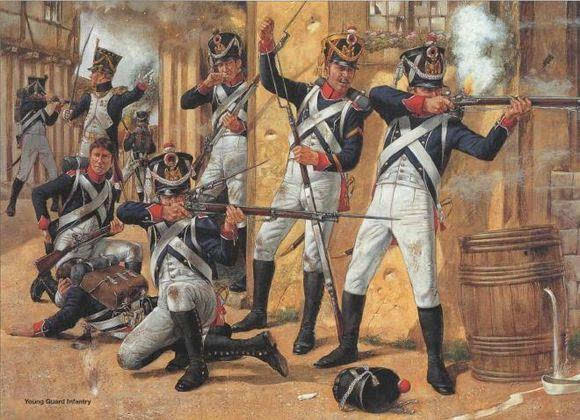
If you need to study the strategies and tactics of the Napoleonic era in depth, you need to use mathematical geometry knowledge.
Let me show you a picture. It involves mathematical geometry knowledge, so I won’t go into details here.
*Insert some class questions
Question: The British Army only has two columns. Does it have anything to do with their higher shooting accuracy?
Zhu Buchong: No, this result is actually a very delicate consideration.
According to statistics, due to poor vision, comrades in the third line of soldiers may account for a quarter of the total casualties of an army's infantry, especially when the third line of soldiers is usually composed of new recruits.
Military strategists from the European army powers, including the British, have considered whether the third column should exist?
Advantages: Provides more depth and bayonet protection (especially when facing cavalry).
Disadvantages: Shooting may cause accidental damage to one's own side. When charging, because you cannot see the situation in front, you can often only blindly follow the front row.
: "1. The formation is dense enough to repel cavalry attacks." Can you expand on this?
Zhu Buchong: Because the power of cavalry lies not only in the hot and cold weapons in their hands, but also in the impact of the high-speed running of man and horse, breaking up the opponent's queue.
Therefore, if infantry wants to defend against cavalry, firstly, it must rely on the weapon's powerful radius to be large enough, and secondly, it must rely on the formation being thick enough to offset the impact.
Look at Waterloo, where the French cavalry charged and the British infantry quickly formed a hollow square formation.
This picture depicts the Battle of Waterloo. At three o'clock in the afternoon, the French cavalry charged. Wellington ordered the infantry to line up in a large hollow square to resist the impact of the French cavalry. The picture should be a corner of a large hollow square formation. The first row of soldiers kneels with bayonets outward, and the second row of soldiers is standing and shooting.
Infantry in the line era must maintain their formation firmly. If they are dispersed, their lethality will be zero. Therefore, when encountering cavalry, they will turn into a large hollow square formation and hold on to the end.
Aunt Xiong asked: Did the Qing Dynasty use this set of battle tactics?
Zhu Buchong: Not in the Qing Dynasty.
Systematic modern infantry drills need to wait until the era of Yuan Shikai's small station training. At the end of the Taiping War, the disbanded Huaer Yangqi Corps trained some troops and officers of the Huai Army in Fenghuang Mountain for more than half a year. However, the foreign gun team itself is not a regular army. It has only been trained for half a year, so it is very doubtful how much the Huai army has really learned.
The training of cavalry is more complex.Except for a few children from aristocratic families who have a foundation in riding skills, as well as herdsmen from horse-riding tribes, most cavalry recruits need to start from scratch – basic formation drills – installation and maintenance of horse equipment – practicing mounting movements – controlling reins – cold The use of weapons and firearms – preliminary formation exercises in groups of four – the concentration and dispersal of large formations
The training period for a cavalry officer ranges from 3 months to 1 year.
The cavalry that had received modern training at that time crushed the previous cavalry in Eurasia. During the Second Opium War, in the Battle of Baliqiao in September 1860, the British Queen's Lancers faced the Mongolian cavalry of Emperor Xianfeng Zeng Gelinqin, showing great power. It easily dispersed the Mongolian cavalry and suffered almost no casualties.
Some people believe that the Battle of Baliqiao led by Seng Gelinqin was a decisive battle between two eras between China's thousand-year-old tradition of cavalry assault and cold weapon close combat and the Western artillery-centered fire war after the Napoleonic Wars and the Industrial Revolution. After all, the body could not withstand the invaders' new guns.
Auntie Xiong: Aim "at a distance of about 60 meters". At 60 meters, it's better to shoot an arrow. No wonder the book always emphasizes that the soldiers have seen clearly the French army.
"The French army was very close. Prince Andrei, who was walking side by side with Prince Bagration, could clearly distinguish the French army's bullet belts, red epaulettes, and even their faces. (He saw clearly An old Frenchman climbed the bushes, struggling to climb the hillside with his feet covered in shoe covers.)
Zhu Buchong: But at this time, the shooting accuracy of flintlock guns has far exceeded that of bows and arrows. The early fire portal guns were indeed inferior to bows and arrows, but with the matchlocks, they gradually began to surpass them, and the flintlock guns were crushing.
Aunt Xiong: When Rostov escaped, it was no big deal if the French soldiers didn’t catch up with him. After reading that, do you still think that the French soldiers should have shot him to death? It seems that it's mainly because I can't hit it.
Reshka: It turns out that because of the trouble, I read that paragraph and thought that the French were not so fanatical about killing their enemies…
Rostov escape scene
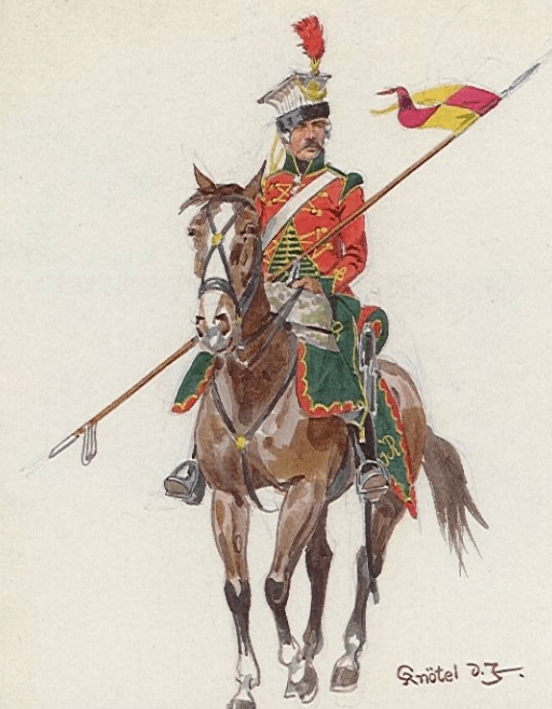
I found a short article that explained the principles of the flintlock gun very concisely and clearly.
: It can be understood that updated (efficiency/precision) weapons, coupled with lighter combat methods that work with them, and greatly improved combat efficiency, are the key to combat in that era?
Zhu Buchong: Mainly due to technical limitations, it cannot be light. A small number of so-called hunters and skirmishers are only used for harassment and sniping, and cannot determine the key to the battlefield.
Compared with the grand squares of the 16th and 17th centuries, the Napoleonic period was indeed lighter.
: The old Duke Bolkonsky in the book, after retiring to his countryside, likes to do advanced mathematics problems…Contact = modeling.
Zhu Buchong: Yes, a senior general cannot understand mathematics, even a rough guy like Marshal Ney must understand it.
So everyone can experience the generational gap between the military technology levels of the East and the West at the beginning of the 19th century. By the time of the Opium War, the Chinese army still used primitive matchlocks, pistols, cold weapons, and a mixture of bows and arrows.
Binshka: After reading, Tolstoy used Little Prince Andrei to criticize the Germans in the Russian army at that time, saying that they only understood theory. If they won the battle, it was because the theory was correct, and if they lost the battle, it was because they did not fully follow the theory.
Zhu Buchong: Yes, the myth of the Prussian Army's invincibility had not yet been formed at that time. In order to keep up with advanced military countries such as France and Britain, the Prussian Army carried out major reforms and reorganization of the army in 1808 and updated its doctrine.
Binshika: I feel that the first war in 1805 is written a little suddenly and is not fully developed. It may be to pave the way for the war of 1812. But when writing about the battle of 1805, I focused on the artillery companies that held their positions.
Photo explanation
Next up is art class! Details of some oil paintings of Napoleonic war scenes. Through the scenes depicted in the picture, you can have a more three-dimensional and intuitive understanding of the arms and battle scenes at that time.
Oil painting from the Napoleonic Wars era, Battle of Friedland
One of my favorite oil paintings from the Napoleonic Wars is the Battle of Friedland. The French cuirassiers are about to charge. They pass by Napoleon and salute the emperor before launching the charge. On the left of the picture are several French hussars.
Trivia, the painter was a woman, Elizabeth Sutherden Thompson, Lady Butler. One of the few famous British female historical painters, most of her works are war-themed. Her husband was Lieutenant-General Sir William Butler.
"Scotland Forever" | Elizabeth Sutherden Thompson
Elizabeth's works also include the famous "Scotland Forever", which depicts the heroic charge of the Scottish Highland Dragoons during the Battle of Waterloo. Of course, this charge failed in the end. The attack on the French artillery position failed. The Scottish dragoons were surrounded by the French lancers and suffered heavy casualties. The commander Lord Ponsonby also died.
Oil painting on the theme of the Battle of Borodino: On the eve of the war, the French artillery commander, the Marquis de Baston, said goodbye to his son, a cuirassier.
"The Battle of Borodino"
In the Battle of Borodino on September 7, 1812, France's 600,000-strong army suffered heavy casualties. Although the French army suffered a tragic victory, the initiative in the war gradually shifted to Russia.
Commanders of both sides: Napoleon Bonaparte, Mikhail Kutuzov (Prince Andrei Bolkonsky served as his adjutant)
These pictures are the real ones I took! Photographed at Les Invalides in Paris. The French probably thought I was a lunatic in Les Invalides. They were talking to themselves with tears in their eyes and taking pictures like crazy.

The collection includes a formal portrait of Napoleon on the throne, the Cross of the Grand Legion, and his saddle.
War and Peace
Some bits and pieces:
1. Movie recommendations
Regarding the wars of the Napoleonic era, Zhu Buchong recommended watching one of the most expensive war films in history. The 1970 version of "Waterloo" was co-produced by France, the United States and the Soviet Union. Without the support of the Soviet Union, there were a large number of low-cost extras, war horses and real-life shooting locations. No. There were 8,000 soldiers performing in the group, and all of them wore freshly made military uniforms…
Still shot by Sergey Bondarchuk.
/ Sergey Bondarchuk/ Rod Steiger/ 1970
Regarding the actor Vyacheslav Tikhonov who played the role of Andrei Bolkonsky in 1966's "War and Peace", the Duke recommended that everyone watch his other famous work, 12 episodes TV series "Seventeen Moments of Spring".
Vyacheslav Tikhonov
(1928-2009)
Seventeen Moments of Spring (1973)
Douban score 9.4
Duke: Just in case anyone doesn't know the hero's greatest creation… "Seventeen Moments of Spring" is super famous and super beautiful. It is said that "Putin decided to become a spy after watching it" (actually he watched another one).
2. How to overcome the inability to read a big book? Cum "How the hell do I force myself to watch War and Peace?"
Shishika: I now play Himalaya at 1.75x speed on my way to and from get off work. Although I can’t hear it exactly, I have some impressions, and it will be faster when I look back at the text.
Shuishui Shika: I am the tomato alarm clock push and watch it without moving.
Leshka: I just watch an old movie and then come back and read a book. That way it’s okay and I don’t feel any pain.
Auntie Xiong: Put sticky notes on it and label the underlined words in the book according to the tags of "appearance", "scene", "sarcastic", "subtle atmosphere" and "discussion".
: I swallowed the medicine with tears in my eyes and set the timer to remind me to get up and take care of my lumbar muscle strain.
3. Tolstoy himself was an artilleryman
A search revealed that Tolstoy himself was an artilleryman:
Although Lieutenant Tolstoy participated in the Crimean War as a grassroots artillery officer, he did not directly participate in any battle. His main battle was still writing. During the Crimean War, which had many firsts (the first use of radio, the use of armored gunboats, the use of steam power, the use of railway transport, battlefield photography and battlefield reporting, the first appearance of the Red Cross), Tolstoy The three Sevastopol war features describe in the most detailed way the unprecedented cruelty of the Crimean War, the world's first modern war.
Shishika: It’s really insightful to read the pre-modern war scenes written by Towen, including how chaotic the command on the battlefield is. Everyone is doing their own thing and fighting independently. After the battle, they have to go to the commander to claim credit. That artillery captain Tushen is He couldn't write PPT, so he relied on Andre to write PPT for him.
4. Tolstoy looks at war
"War" and "Peace" in Russia described by Tolstoy | "Sanlian Life Weekly" 2010-11 Cai Wei
Tolstoy's great-granddaughter looked at the war more than a hundred years later:
